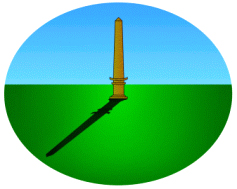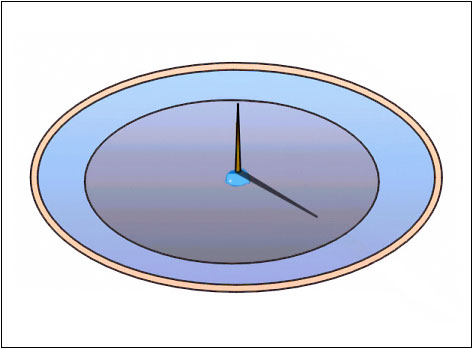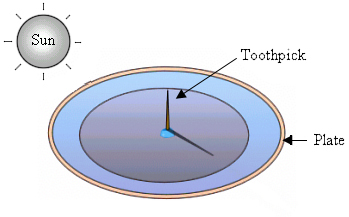Introduction to sundials
This task is exploring how sundials can be used to tell the time.

If you stand outside on a sunny day you can see your shadow. If you stayed in one place all day long, you would see you shadow moving. You could put a stick in the ground and make marks where the stick's shadow was every hour. Now you can can tell the time by looking at where the shadow falls on your marks.
Shadow sticks have been used by humans to tell time for many thousands of years. Another name for a shadow stick is a gnomon (no-mon). The ancient Egyptians built tall gnomons made from stone, which they called obelisks. People could tell the time by looking at the where the obelisk's shadow fell. Later the Greeks and Romans developed sundials to tell the time. Sundials are smaller and work better.
| a) |
To make your own sundial:
 |
|
| b) |
At 10:00 a.m., 12:00 p.m., and 2:00 p.m., carefully draw around the whole length of the shadow and write the time next to it.
|
|
| c) | i) |
Write down what you noticed about the size of the shadow your sundial made.
|
| ii) |
Write down what you noticed about how the shadow moved.
|
|
| d) |
Draw and label on your sundial where you think the Sun's shadow will fall at the following times:
Write the time next to both shadows.
|
|
| e) |
Draw where the Sun would be in the picture below to make the shadow shown.
|
|
 |
||
| f) | i) |
In which sort of day would the sundial not tell the time very well?
(Circle as many as you think.)
Cloudy Bright and sunny Rainy Clear blue skies
|
| ii) |
Explain why.
|
|


